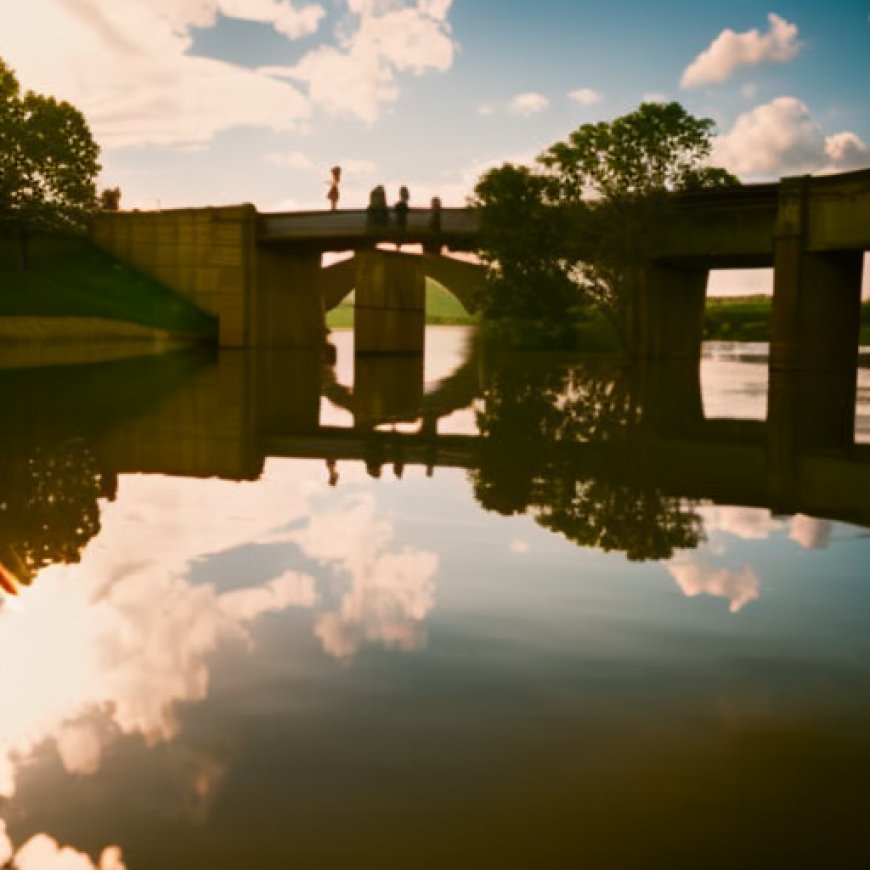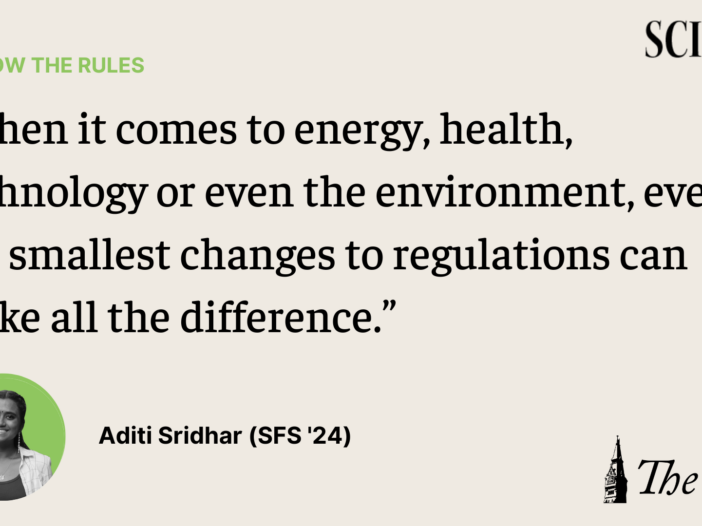FOLLOW THE RULES | Water Under the Bridge: The WOTUS Rule
FOLLOW THE RULES | Water Under the Bridge: The WOTUS Rule Georgetown University The Hoya


FOLLOW THE RULES | Water Under the Bridge: The WOTUS Rule


Introduction
Landmark government action usually brings to mind an act of U.S. Congress. In rare cases, an executive order could fall under this category. What I can guarantee is that few, if any, would think of administrative rulemaking as a landmark government action, which is when agencies create regulations to enforce legislation.
When it comes to energy, health, technology or even the environment, even the smallest changes to regulations can make all the difference.
The WOTUS Rule and Sackett v. EPA
Nowhere is this more evident than in regulations regarding the conservation of water bodies and aquatic ecosystems, which became the focus of Sackett v. Environmental Protection Agency (EPA), a U.S. Supreme Court case decided in August 2023.
Sackett v. EPA sought to determine whether the Biden administration’s “waters of the United States” rule was legal, thus indirectly determining the Clean Water Act’s geographic reach. Ultimately, this ruling barred tens of millions of acres of wetland from being covered under the Clean Water Act.
The “waters of the United States”, or WOTUS for short, have been the subject of a number of rules seeking to alter the scope of the Clean Water Act of 1972. In 2021, the U.S. EPA under President Joe Biden proposed a rule that redefined “waters of the United States” to include a wider array of waters under federal jurisdiction.
Previously, in 2019, the Trump administration passed a WOTUS rule that only included six categories of waters: traditional navigable waters, tributaries, certain ditches, certain lakes and ponds, impoundments, and adjacent wetlands.
By broadening the scope of this definition to also include lakes, ponds, streams and any other wetlands that may form a significant nexus with the waters or are considered relatively permanent, thousands of new waterways would fall under federal jurisdiction. In fact, under the Trump administration, at least 18% of the United States’ streams and 51% of the country’s wetlands were not included.
Impact on Water Protection
The inclusion of these water bodies in the WOTUS definition is critical because the provisions of the Clean Water Act, which have played a major role in improving the state of U.S. waters, applies only to waters with this privileged status.
However, Supreme Court Justice Samuel Alito, in his majority opinion in Sackett v. EPA, wrote that wetlands that do not connect on the surface to another body of water under federal jurisdiction should not receive protection under the Clean Water Act.
In legal terms, this ruling struck down the “significant nexus” standard, which excluded the majority of U.S. wetlands and a variety of other water bodies from federal environmental protections. Four other justices, Justice Roberts, Justice Thomas, Justice Gorsuch and Justice Barrett, agreed with him.
This reasoning has disastrous ramifications for the future of water protection in the United States. The Clean Water Act, which prevents entities from polluting in these waters without a special permit, has undoubtedly improved the state of U.S. waters.
Importance of Administrative Rulemaking
A 2018 study from University of California, Berkeley and Iowa State University confirmed that water pollution dramatically decreased after the implementation of the Clean Water Act and that the share of rivers safe for fishing grew by 12 percent between 1972 and 2001.
Moreover, their study found that municipal grants for wastewater treatment facilities funded under the Clean Water Act led to improvements in downstream water quality. Including more waters in the definition of WOTUS will maximize the scale of the benefits of the Clean Water Act.
Unfortunately, despite their significant impact, Supreme Court cases surrounding regulation, like Sackett v. EPA, are often obscured from the public eye due to their legal complexity and a lack of awareness of the process of administrative rulemaking.
While the functions of government can often seem insulated and bureaucratic, administrative rulemaking is a notable area where the public is able to directly contribute through federal action through the public comment process.
In periods of legislative gridlock, administrative regulation is also one of the few avenues left to pursue federal action. It’s time to stop neglecting the crucial process of administrative rulemaking and start affording it the scrutiny and attention it deserves.
Conclusion
So the next time you write off a news article on POLITICO or The New York Times about administrative rulemaking as boring or far too complicated, rethink your decision. Rules are often far more noteworthy than what meets the eye.
SDGs, Targets, and Indicators
1. Which SDGs are addressed or connected to the issues highlighted in the article?
- SDG 6: Clean Water and Sanitation
- SDG 14: Life Below Water
The article discusses the regulations and legal rulings related to the conservation of water bodies and aquatic ecosystems, which directly align with SDG 6 and SDG 14.
2. What specific targets under those SDGs can be identified based on the article’s content?
- SDG 6.6: By 2020, protect and restore water-related ecosystems, including mountains, forests, wetlands, rivers, aquifers, and lakes.
- SDG 14.1: By 2025, prevent and significantly reduce marine pollution of all kinds, particularly from land-based activities, including marine debris and nutrient pollution.
The article highlights the importance of regulations and legal rulings in protecting and restoring water-related ecosystems, which aligns with SDG 6.6. It also discusses the impact of these regulations on preventing water pollution, which is relevant to SDG 14.1.
3. Are there any indicators mentioned or implied in the article that can be used to measure progress towards the identified targets?
- Indicator for SDG 6.6: Proportion of water bodies with good ambient water quality.
- Indicator for SDG 14.1: Marine pollution index.
The article mentions the implementation of regulations and legal rulings to improve water quality and prevent pollution, which can be measured using indicators such as the proportion of water bodies with good ambient water quality (SDG 6.6) and the marine pollution index (SDG 14.1).
Table: SDGs, Targets, and Indicators
| SDGs | Targets | Indicators |
|---|---|---|
| SDG 6: Clean Water and Sanitation | 6.6: By 2020, protect and restore water-related ecosystems, including mountains, forests, wetlands, rivers, aquifers, and lakes. | Proportion of water bodies with good ambient water quality. |
| SDG 14: Life Below Water | 14.1: By 2025, prevent and significantly reduce marine pollution of all kinds, particularly from land-based activities, including marine debris and nutrient pollution. | Marine pollution index. |
Behold! This splendid article springs forth from the wellspring of knowledge, shaped by a wondrous proprietary AI technology that delved into a vast ocean of data, illuminating the path towards the Sustainable Development Goals. Remember that all rights are reserved by SDG Investors LLC, empowering us to champion progress together.
Source: thehoya.com

Join us, as fellow seekers of change, on a transformative journey at https://sdgtalks.ai/welcome, where you can become a member and actively contribute to shaping a brighter future.







